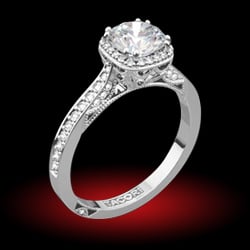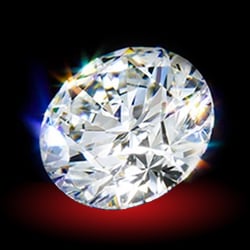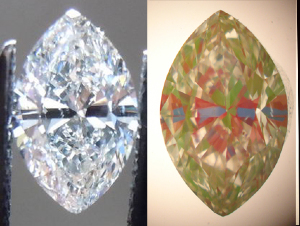- Joined
- Jan 7, 2009
- Messages
- 10,377
HI all,
I heard a very interesting interview on NPR the other day, and PS came to mind.
Here's a transcription. The author of this book coined a few phrases, which I feel relate directly to aset interpretation here on PS. "Proofiness" and "Disestimation "
The section below got me to thinking about the interpretation of aset images.
Basically, aset is looking at one aspect of a diamond, and from a very limited perspective. That being a "given" lighting scenario
My position is that interpretation of aset images is systematically incorrect.
The tool does what it does. it shows where the diamond is getting light from.
I find a lot of limitations with that aspect- but far more is the mistaken belief that the information it provides has broad based relevance for consumers.
If, as I strongly believe, this information is interpreted completely incorrectly, with false conclusions drawn, it's far worse than no information at all.
I heard a very interesting interview on NPR the other day, and PS came to mind.
Here's a transcription. The author of this book coined a few phrases, which I feel relate directly to aset interpretation here on PS. "Proofiness" and "Disestimation "
The section below got me to thinking about the interpretation of aset images.
Every poll comes with a little number attached to it called the margin of error, and the margin of error is taken as how reliable this poll is, that it's 23 percent belief that Barack Obama is not born in the United States, plus or minus three percent. The problem is that for these polls, the margin of error only describes one very specific type of error that plagues polls. It comes from taking a small sample of people and projecting it to the entire world.
But in fact, when polls go wrong, it's due to a completely different type of error called the systematic error. These are errors that come when the poll isn't set up quite right, that the questions are a bit misleading or that you choose the wrong sample of people to interview or people are lying.
And these numbers are not reflected in the margin of error. So when journalists report polls, most of which are really not worth the paper they're written on, I think they're kind of innocently performing an act of proofiness, giving the public quasi-fictions in the name of fact.
Basically, aset is looking at one aspect of a diamond, and from a very limited perspective. That being a "given" lighting scenario
My position is that interpretation of aset images is systematically incorrect.
The tool does what it does. it shows where the diamond is getting light from.
I find a lot of limitations with that aspect- but far more is the mistaken belief that the information it provides has broad based relevance for consumers.
If, as I strongly believe, this information is interpreted completely incorrectly, with false conclusions drawn, it's far worse than no information at all.














300x240.png)